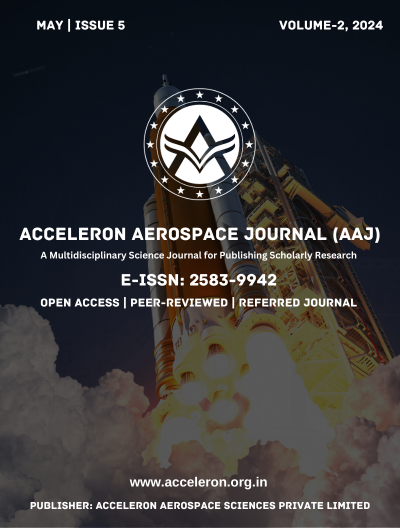Application of Artificial Intelligence in Solar System Exploration and Beyond
DOI:
https://doi.org/10.61359/11.2106-2424Keywords:
Artificial Intelligence, Solar System, Outer Space Exploration, Gravitation, Space Vehicles, Space Debris, Space Missions, TrajectoriesAbstract
Carl Sagan’s reflections emphasize the boundless potential awaiting humanity in space, regardless of our past achievements or failures. This optimistic view resonates with current space agencies, private space startups, and enthusiasts, all driven by the ambition to make humans a multiplanetary species. Key examples include Elon Musk’s goal to terraform Mars, despite skepticism from some scientists. Space exploration faces numerous challenges, such as dealing with space debris, unpredictable climates on other planets, and the complexities of missions like NASA’s attempts to land on Mars. Space missions confront obstacles in navigation, life detection, and sample testing. Astronauts also encounter physical and mental limitations due to the harsh conditions of space. Artificial Intelligence (AI) has emerged as a crucial tool in addressing these challenges. AI is categorized into supervised learning, unsupervised learning, and semi-supervised learning, with reinforcement learning being a distinct method used for autonomous applications. Neural networks, including convolutional and recurrent neural networks, mimic human behavior for tasks like image inspection and sequential data handling. Deep learning aids in complex pattern recognition, and natural language processing facilitates speech recognition and development. Expert systems enhance decision-making processes. This review explores various AI applications in space missions. AI technologies have been integral to recent missions such as the James Webb Space Telescope, which uses AI for object and galaxy inspection, and the ARTEMIS mission, which employs AI in designing new spacesuits. SpaceX leverages AI for reusable launch vehicles, while the European Space Agency (ESA) uses AI for autonomous spacecraft to cut mission costs. India plans to launch the AI-based Vyommitra robot in space and has utilized AI in the Chandrayaan mission for landing and navigation. Mars exploration benefits significantly from AI, given the planet’s unpredictable weather and cratered surface. AI technologies, like the OASIS system, aid in mission planning and rover navigation. AI also supports space agriculture research, as demonstrated by the UAE’s habitat design efforts. Beyond Mars, AI influences the exploration of asteroids and deep space. AI techniques, such as convolutional neural networks, assist in space dynamics calculations to predict asteroid trajectories and potential Earth impacts. AI has been employed in Voyager missions to seek extraterrestrial life and in the Hubble telescope for imaging exoplanets. AI enhances satellite communication and automates tasks on space stations, saving time and costs. Weather satellites, powered by AI, provide crucial alerts for natural disasters. Despite the challenges, AI offers promising solutions for advancing space exploration. The historical tendency to deem certain challenges insurmountable is gradually shifting, as past impossibilities, like human flight and space travel, have become historical milestones. This reinforces the importance of maintaining hope and persistence in the quest to explore space, as today's dreams may become tomorrow's history.
Downloads
Downloads
Published
How to Cite
Issue
Section
Categories
License
Copyright (c) 2024 Acceleron Aerospace Journal

This work is licensed under a Creative Commons Attribution 4.0 International License.
The Acceleron Aerospace Journal, with ISSN 2583-9942, uses the CC BY 4.0 International License. You're free to share and adapt its content, as long as you provide proper attribution to the original work.





